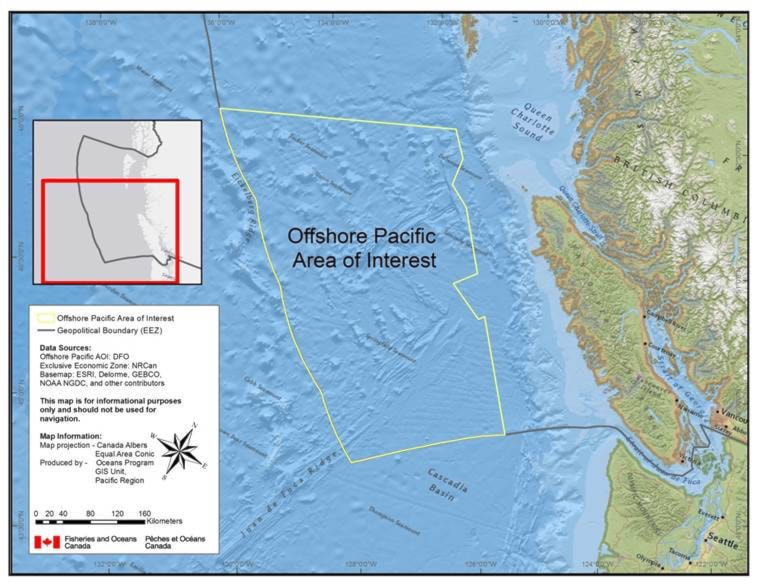The Department of Fisheries and Oceans Canada (DFO) has proposed a 139,700 kilometre square Marine Protected Area (MPA) offshore of Vancouver Island to protect biologically significant seafloor features, including seamounts and hydrothermal vents.
At its closest, the proposed MPA is located about 80 km from the West Coast of Vancouver Island, but on average it is 100-150 km from the Coast.
Joy Hillier, a biologist and coastal zone management co-ordinator for DFO, was in Ucluelet on Tuesday to share information on the ecological importance of the area.
“The features that we are trying to protect in the offshore are the vents and seamounts. They are, kind of, like the trees of the ocean in that they create that structure that other species can use and they also clean the water. They filter it. They are, kind of, like the lungs of the ocean,” said Hillier.
A 150-page report called ‘Identification of Ecologically and Biologically Significant Areas in Canada’s Offshore Pacific Bioregion’ written by 15 academic and government scientists containing information from more than 400 scientific publications demonstrates the importance of seamounts and vents.
“It shows us that they are very rare. They are important to different life history stages for a variety of species. Threatened species are also known to use these threatened areas. We also know, based on their geomorphology that they are vulnerable in that they can be impacted by human activity,” said Hillier.
A downside to the proposed MPA is that it would prohibit any activities that has bottom contact with the groundfloor of the ocean, according to Hillier.
“All longline fishing and bottom trawling,” she said.
With the agreements the government has signed under the United Nations Law of Convention at Sea, it is unlikely to see the proposed MPA a ‘no go zone’, notes Hillier. However, Electoral Area “C” (Long Beach) director Tony Bennett, who sits on the advisory committee for the proposed offshore marine protected area, said that issue is up for discussion.
“There are some people on the advisory that would like to see a ‘no go zone’ for all shipping and all boats,” Bennett said. “The Minister will make the final decision.”
The Offshore Pacific proposed MPA makes up about 2.43 per cent of Canada’s ocean territory.
“The government of Canada is working towards having this area declared a MPA by the end of 2020,” said Hillier, adding that there is still a lot of work to do and that they are going through consultation processes with stakeholders.
“As we move ahead towards the designation process the piece of legislation that is being developed will be out for [public] review,” she said.
A message to a representative in the groundfishing industry was not returned by press time.
